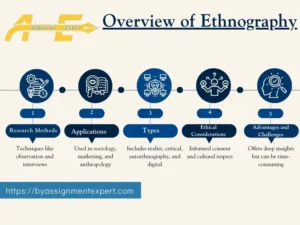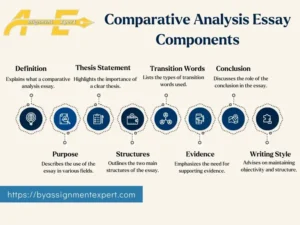A PhD thesis is the research outcome that every student needs to showcase and produce to meet the requirements of their PhD course. Writing a PhD thesis describes the analysis you engaged in throughout your PhD. It lists decisions you cleared out along with the results.
Questions like how to write a PhD thesis may overwhelm you. Fear not; there are many ways to forget the anxiety of this question with minimal problems on the way. Let us give you some basic information and writing tips that will make the PhD thesis assignment writing easier and less stressful, so you can submit your thesis on time.
How to Structure Your PhD/Doctoral Thesis
The given guidelines for the structure of doctoral thesis writing include all the required parts in a well-organized and properly structured style.
Title Page
- The title page should include:
- Thesis Title
- Your Name
- Degree Program
- Institute and Department
- Date of submission
Abstract
The abstract contains information on what is offered to readers as a thesis: the problem, the methods used, the findings, and the conclusions. It needs to be concise but contain all the elements the readers need to know, in case they have not known. Each abstract should be at least 300-500 words.
Acknowledgments
When giving acknowledgments, mention every person who helped you in your research process.
Table of Contents
The document includes a table of contents with all large sections, subsections, and pages, which helps readers find a thesis.
List of Figures and Tables
If your thesis has figures or tables, list them and their respective page numbers. The brief names will help readers quickly find specific items in this document.
Introduction
In the introduction section, the study provides a narrative of the background to the problem, the purpose of the study, and the rationale for choosing the study area. The narrative should be interesting and capture the reader’s attention; the reader should be instructed and know what to expect in the thesis.
Literature Review
The literature review writing is searching for works associated with the topic under consideration. It suggests areas your research expects to address and locates your study within the existing Literature.
Methodology
The section of the research proposal’s methodology provides access to specimen information for the research study.
Results
In the results section, describe the studies and their results, quantitatively explain them, and graph them wherever possible. It is suitable to wait to read the results created in this section. For example, in a chemistry thesis, you may provide spectroscopic data. Same as in psychology, you may offer survey suspect statistics.
Discussion
The discussion chapter provides a vision into reading results and outlines their effects. Reflect on the findings discussed and relate your results to the Literature; consider any surprises.
Conclusion
It arrives at the formulation of the final thesis. Specify the directions for further research and consider this study’s contribution.
References
Include all the sources you have used in your thesis research and formulate the list using the citation style you applied. Ensure that all sources are cited consistently and according to the writing format.
Appendices
The raw data, calculations in the analysis process or other graphs or tables that do not fit the main content of the paper should be placed in the appendices. The findings are displayed in this material but are not central to the research.
PhD Thesis Chapters Outline
A PhD thesis outline is meant to show your research successfully. Each section has a purpose.
Introduction
Topics covered in this section are the title, background to the research topic, and research question or challenge. This section explains the purpose and importance of your research work and offers a brief idea about the thesis format.
Literature Review
In this chapter, you look for Literature in academic articles that will be useful to your study. Remember some Tips:
- Review academic frameworks and past research
- Differentiate between what has been discovered.
- What has been overlooked
- Where your study can help in filling the gaps of the existing business knowledge.
Methodology
Describe your model ((qualitative, quantitative, or mixed), data collection procedures, and data analysis. This section should conclude with enough details to facilitate repeat research and justify the study’s condition.
Results
Present your findings accurately in this chapter. Justify applying tables, figures, and charts to make the data. Report the analysis; no analysis should be included in this section.
Discussion
In this section, investigate and explain the outcome of this chapter. Lastly, consider your outcomes from a theoretical perspective and evaluate the links between your results and the topic under research.
Conclusion
The conclusion is always about the central finding. Most importantly, consider the importance of your research.
Bibliography
List and arrange all the sources cited within the paper according to the specified format to ensure consistency and accuracy with citations. Remember to hold the specified citation style, such as APA, MLA, or Chicago, and be consistent in using it.
Index
Including the extra information in appendixes (Index) containing raw data or other extra charts is also helpful. This chapter gives your thesis but needs to fit the main body.
How to Make PhD Thesis Research

A PhD thesis should attempt to produce new knowledge in your field. Way of doing research for your PhD thesis depends on your discipline. Here is the general method to make PhD thesis research.
Identifying a Research Problem
The literature review helps to identify what past research has focused on and what has been overlooked.
Conducting a Literature Review
Carry out a literature review that contains all the available Literature. If you wish to set your study in the active body of knowledge, say, the researcher framework and important academic findings and cases in your field.
Designing the Methodology
Depending on your research questions, shape the research analysis type, whether qualitative, quantitative, or a blend of both. Plan your measurement instruments, which may include questionnaires or experimental tests.
Collecting and Analyzing Data
Gather data using an organized and moral approach to make the results complete and usable. After analyzing the identified data set, use techniques to draw the best conclusions.
Writing the Thesis
Present your research in an organized format: Introduction, Literature Review, Methodology, Results, Discussion, and Conclusion. Revise and edit your thesis for clarity, logical flow, and scholarly accuracy.
Read related blog: How to write a research paper?
What Should be Length of a PhD Thesis
The word count of a PhD thesis varies by the topic of your specialization, but it is usually longer than the thesis for an undergraduate or master’s degree. The average length of the thesis is around 80000 words. The announced number of semester hours can have maximum terms between 70,000 and 100,000 words.
Studies in STEM fields (science, technology, engineering, and mathematics) are generally smaller in number. It is essential to be informed of rules in the specific university and department regarding what is considered in the word count writing, references, bibliographies, or appendices. These are regular details that you ought to check with your supervisor.
Time Required to Write a PhD Thesis
The time it takes to write a Ph.D. thesis differs hugely among students: from as little as six months to many years. Factors influencing the duration include:
Research Scope
The time may be longer if the required work includes deep and complete research, leaving no stone unturned. For example, if you write a thesis under a history major, you likely carried out research for a few years in the records. While a thesis under a Computer Science major may need organizing experiments and data analysis, among other things.
Discipline
What can be assumed differs between fields of knowledge. Subject areas such as history or sociology require more comprehensive literature searches than logically technical topics.
Individual Pace
- A student’s writing speed, other responsibilities, and experience with scholarly activities differ, so the total time taken also changes.
- Set measurable goals and turn them into a detailed schedule when planning your time.
- Review it regularly and update accordingly.
- Breaking the thesis into small, manageable tasks will allow work to be done at a balanced pace without feeling overwhelmed.
Tips for Writing Well Structured PhD Thesis
Any PhD thesis should be primarily structured, professionally written, and formed. Key elements to consider include:
- Express yourself in plain English, keep your language simple, and avoid using various technical terms.
- Ensure that each section is consistent with the previous and following sections.
- Ensure the document’s headings, fonts, and citation style are stable.
- Your thesis should advance the current knowledge, which means it should focus on the outcomes of your research and personal analysis.
- For example, when developing a thesis in Economics, one might incorporate analysis with statistical data, while in Literature, the thesis would involve examinations of a text and theories.
How to Write Your PhD Thesis Faster and Effectively
There are ways of finishing a PhD thesis faster. Here are some tips:
- Set an applicable word count that must be written daily.
- Writing with a clear outline is easier because the writer is always aware of the areas of concern.
- Separate your work into sections and subsections of the thesis.
- Write down the critical points for each part.
- Note who you are citing and any data.
- Discuss your designs regularly with your supervisor and seek his approval and advice.
- Organize your environment so you are organized and limit troubles so there are few interruptions.
Final Thoughts
Writing a PhD thesis is a significant effort; though this is true, the task can be accomplished if planned well and applied with much application. Organizational skills will be highly beneficial when managing this somewhat complex process. Thus, by adhering to the abovementioned suggestions and keeping to a strict schedule, you can deal with the question of how to do a PhD thesis.
















